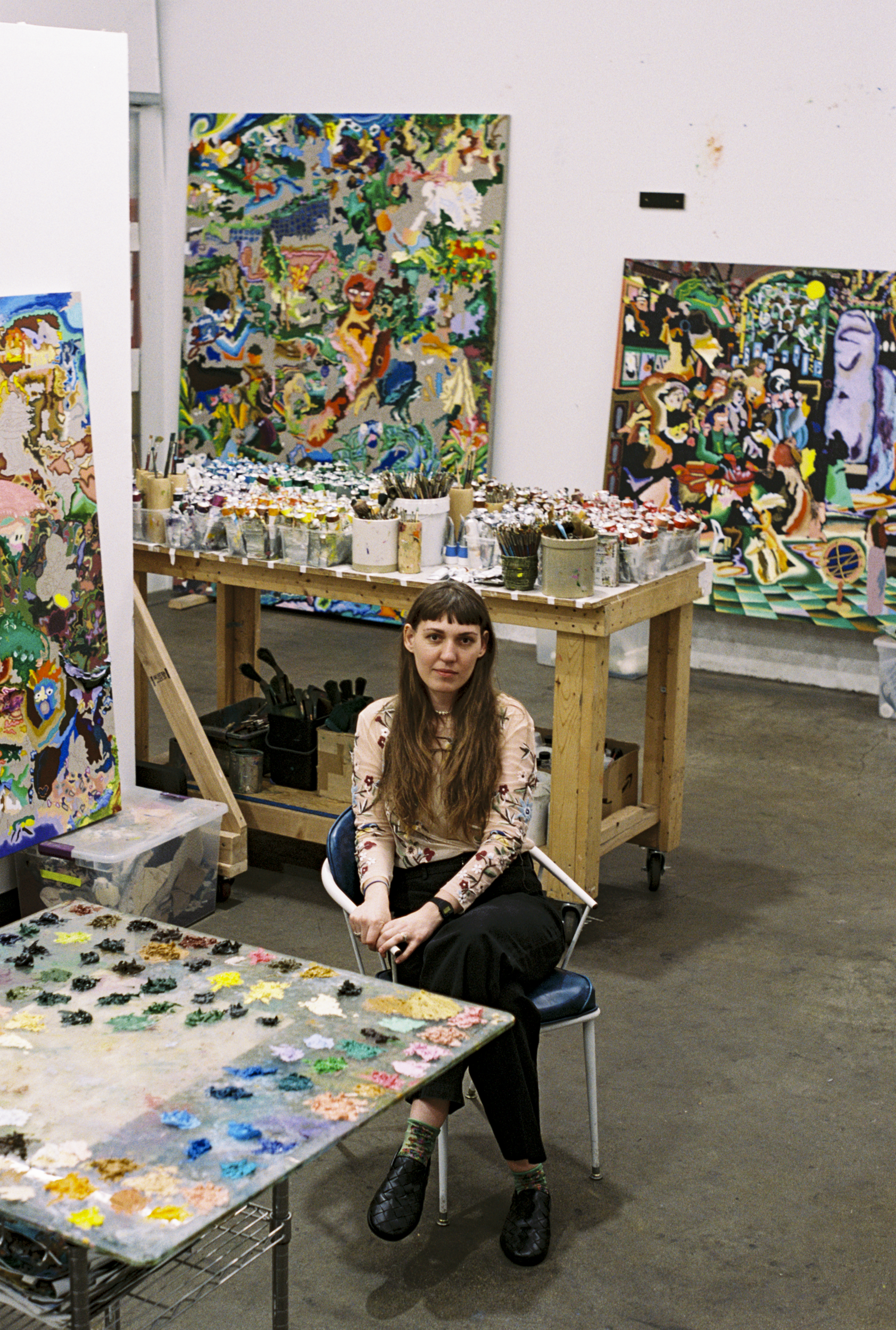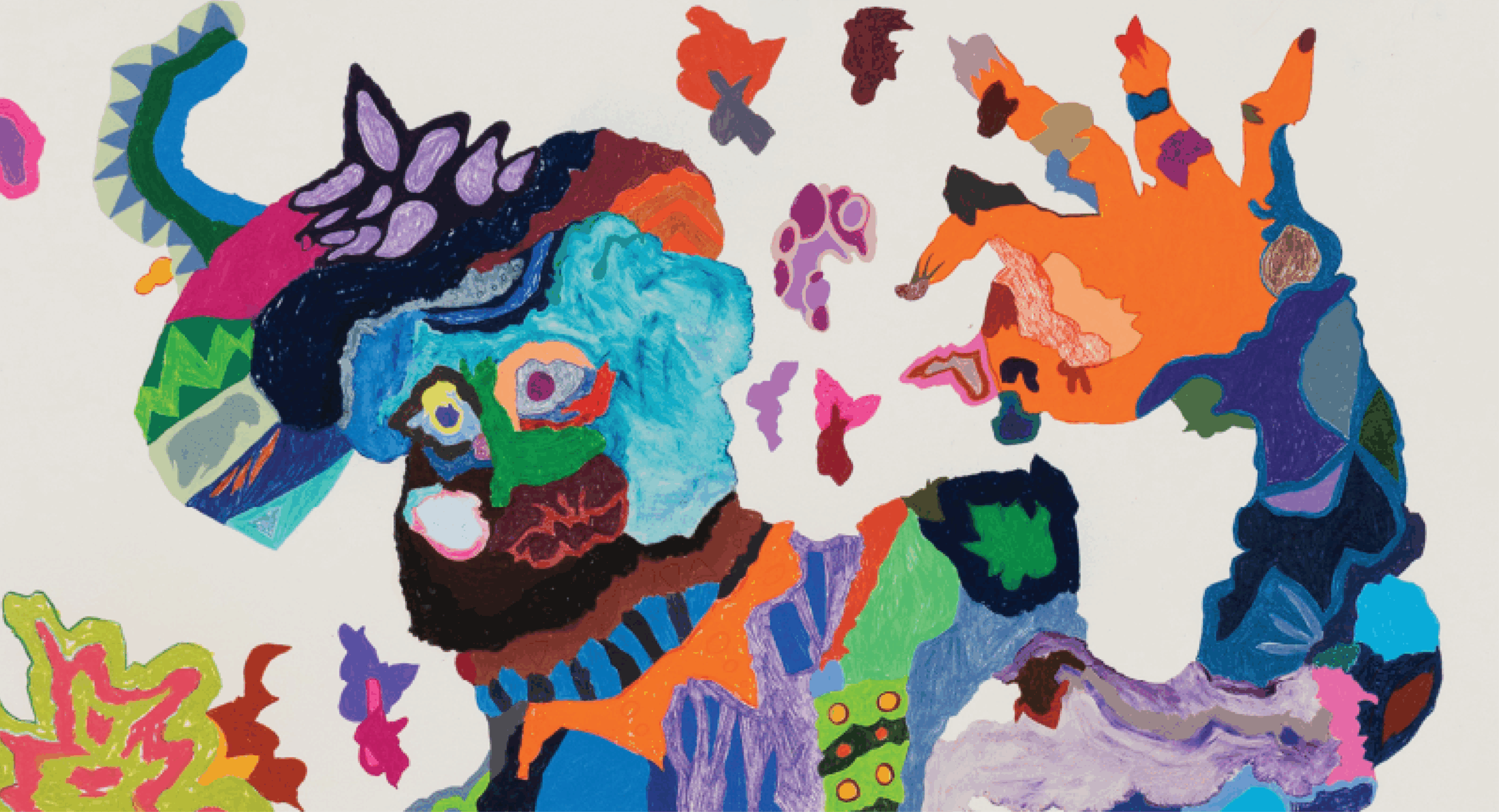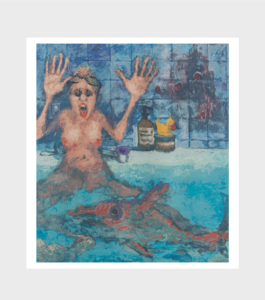Cindy Phenix
Cindy Phenix (born in 1989 in Montreal, Canada) is an acclaimed contemporary painter whose work has captured international attention for its vibrant exploration of complex narratives, merging figuration and abstraction to deconstruct power structures and social norms. She currently lives and works in Los Angeles, California.
Academic Background and Early Years
Phenix grew up in a suburb of Montreal and moved to the city for her university studies. Initially, she leaned towards art education and psychology with the intention of pursuing a career in art therapy. However, the support of her mentors encouraged her to fully dedicate herself to painting and drawing.
She earned her Bachelor of Fine Arts (BFA) with distinction from Concordia University in Montreal in 2016. Subsequently, she moved to the United States to continue her education, obtaining a Master of Fine Arts (MFA) in Art Theory and Practice from Northwestern University in Evanston, Illinois, in 2020. Her time in Chicago was pivotal, exposing her to a rawer and more experimental artistic environment that profoundly influenced her practice.
Artistic Style and Themes
Phenix’s visual language is known for its dynamism and complexity. Her often large-scale paintings are characterized by the use of intense colors, fragmented compositions, and an interplay between recognizable figuration and chaotic abstraction. Her works are constructed from digital collages that combine images from various sources, from photographs of her daily life to art historical references, which she then projects onto the canvas.
At the core of her work is an investigation into the relationship between the public and private spheres, the dynamics of power, and the emotions they generate. A distinctive aspect of her process is the organization of participatory discussion groups, which inform much of her subject matter, exploring shared experiences, often from a feminist perspective.
Her canvases are populated by “monstrous” figures and characters with mutable, gender-indefinite bodies. These beings, through their abjection, become symbols of power and personal freedom, challenging social classifications and hierarchical structures. More recently, her work has incorporated a strong eco-feminist discourse, exploring the interconnection between human beings, nature, and ecological challenges, often using imagery of flora, fauna, and marine life.




